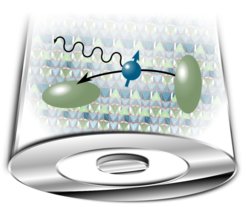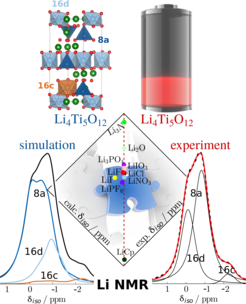Theory of Magnetic Resonance Spectroscopy
Associated Köcher Group @ Helmholtz
Theory of Magnetic Resonance Spectroscopy
Our work focuses on simulating and analysing magnetic resonance spectra of energy materials as well as supporting experiments by optimizing pulse sequences.
For additional information see also our pages on
Jülich Forschungszentrum, Institut für Energie- und Klimaforschung (IEK), Grundlagen der Elektrochemie (IEK-9)

Energy storage and conversion systems contain various highly complex materials. Spectroscopic methods such as nuclear magnetic resonance (NMR) or electron paramagnetic resonance (EPR) spectroscopy offer powerful tools to study the structure and properties of those energy materials.
However, the challenging complexity of the materials is reflected in rather intricate, complicated spectra, which are difficult or even impossible to interpret unambiguously. Hence, the analysis of the results of standard NMR or EPR techniques can profit considerably from theoretical simulations and computational models.
By combining materials modelling with the simulation of magnetic resonance parameters such as chemical shielding or electric field gradient tensors, we facilitate the comprehensible analysis of complex spectra of state-of-the art energy materials. The atomistic dynamics of energy storage and conversion materials can also be studied with magnetic resonance methods. The mobility of atoms and charge carriers has a crucial impact on the observable spectroscopic parameters. Hence, we also have to study spin dynamics and to include atomistic motion in our models on different length and time scales.

Chemical Shift Reference Scale for Li Solid State NMR Derived by First-Principles DFT Cal- culations. Journal of Magnetic Resonance 297, 33 (2018), https://doi.org/10.1016/j.jmr.2018.10.003.
Based on the detailed interpretation of spectroscopic results and the subsequent development of a conceptual model of the material or system, new experiments are conceived and optimized by customization of the excitation pulses with theoretical algorithms. We delve into the structure-property relationship of energy materials to get a better understanding of their structure, interplay and functionality. Strengthening the bond between experiment and theory and exploiting its synergies are at the heart of our work. Theoretical models and computational simulations are critical for understanding complex materials and analysing experimental results. On the other hand, experimental data are fundamental in validating theoretical models and new computational methods.

